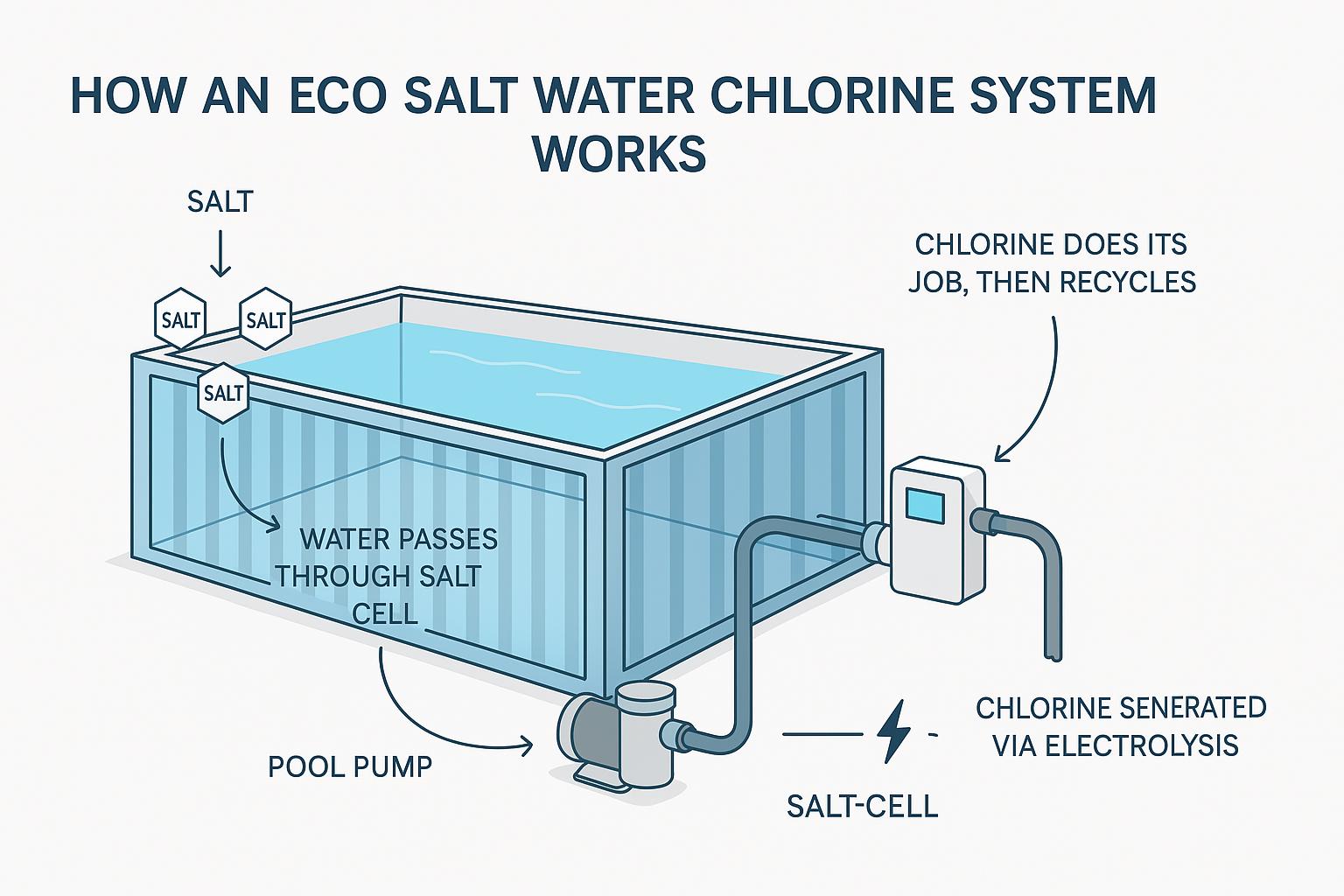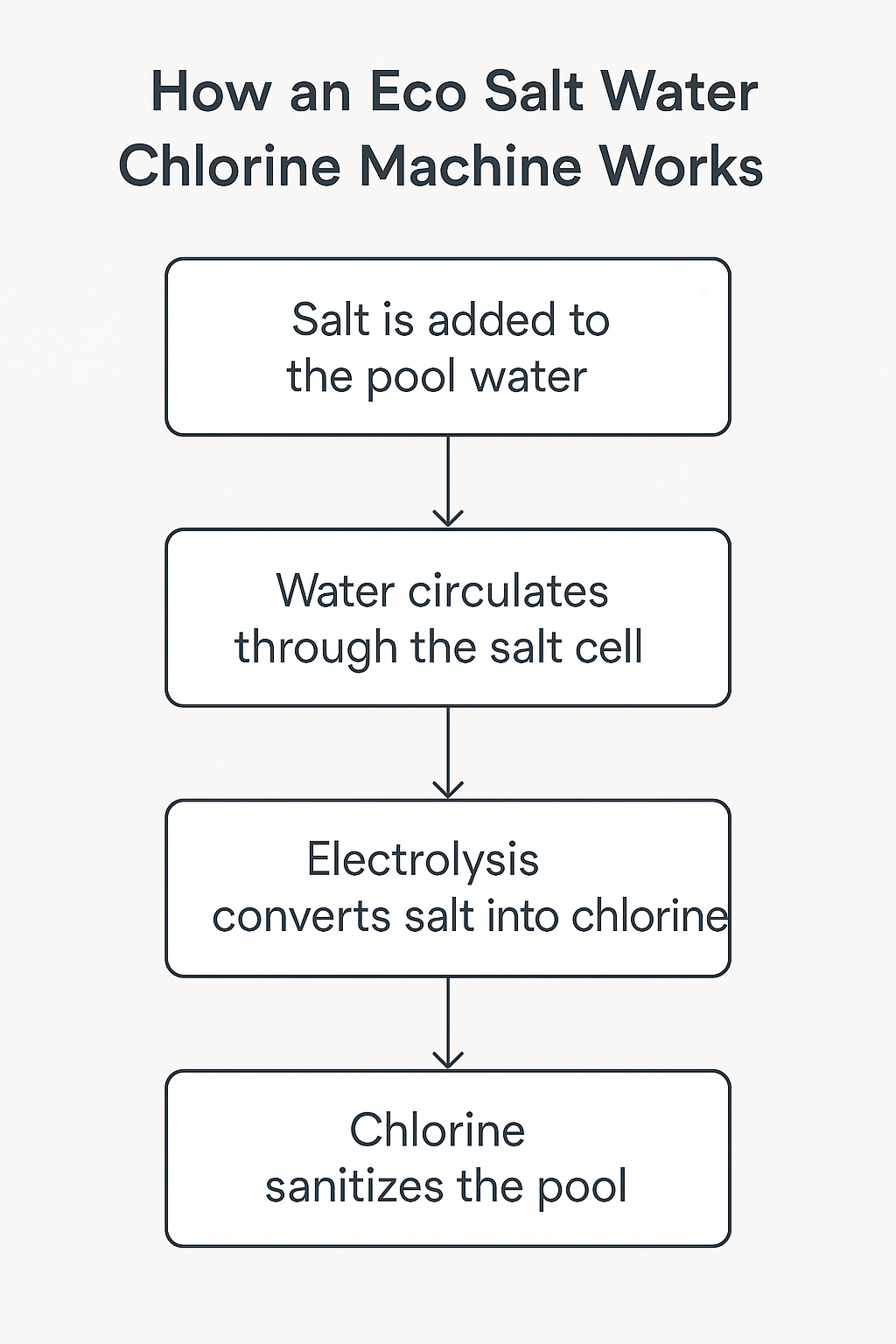Description
When it comes to keeping your container pool clean, healthy, and low-maintenance, few options compare to the convenience and eco-friendliness of a salt water chlorine system. Also known as an eco salt chlorinator or saltwater sanitation system, this technology is gaining popularity for container pools across New Zealand and the Pacific. It offers a safer, more sustainable way to sanitize water without the need for constant chemical dosing.
🌊 What is an Eco Salt Water Chlorine Machine?
An eco salt water chlorine machine is a sanitation system that automatically produces chlorine from salt added to your pool water. Instead of manually dosing your pool with chlorine tablets or liquid, the system creates chlorine through electrolysis—a process that converts salt into hypochlorous acid, the same active agent found in traditional chlorine.
These systems are especially well-suited for container pools, where consistent sanitation, low maintenance, and water quality are essential.
⚙️ How It Works in a Container Pool
1. Salt is Added to the Water
Salt (sodium chloride) is added directly into your container pool. It dissolves and maintains a stable concentration of around 3,000–4,000 parts per million (ppm)—roughly the salinity of human tears.
2. Water Passes Through the Salt Cell
Your pool pump circulates water through a device called a salt cell. Inside, titanium plates are charged with low-voltage electricity.
3. Chlorine is Generated via Electrolysis
As saltwater flows through the cell, electrolysis occurs. The process converts the salt into chlorine (hypochlorous acid and sodium hypochlorite)—the agents that sanitize your pool by eliminating bacteria, algae, and contaminants.
4. Chlorine Does Its Job, Then Recycles
After disinfection, the chlorine naturally reverts back to salt, allowing the system to recycle and produce chlorine again. This means you’re not constantly adding new chemicals—only topping up salt when needed.
💡 Why Use a Salt Water Chlorinator in a Container Pool?
Container pools are compact, efficient, and ideal for smaller outdoor areas or off-grid setups. An eco salt chlorinator complements this flexibility with:
✅ Low Maintenance
Say goodbye to daily chemical checks. Once installed, a salt chlorinator manages chlorine production for you—just monitor salt levels every few weeks.
✅ Better Water Quality
Saltwater is softer on the skin and eyes and doesn’t produce the strong chlorine odor found in traditionally treated pools.
✅ Eco-Friendly Operation
Chlorine is produced naturally within the system, reducing the need for plastic bottles, transport, and chemical waste. It’s a greener solution for sustainable pool ownership.
✅ Cost Savings Over Time
While initial costs are higher, you'll save money in the long run by eliminating the ongoing purchase of chlorine products.
✅ Perfect for Off-Grid or Remote Locations
For container pools installed in rural or island settings, this system reduces the dependency on regular deliveries of pool chemicals.
🛠️ Installation & Operation Tips
Most systems are installed in-line with your pool’s filtration system, after the pump and filter. Key features include:
Digital chlorine control panels
Self-cleaning salt cells with reverse polarity
Flow sensors to protect the system
Low-voltage operation
Important: Ensure your pump and filter are compatible with the chlorinator size. Most brands offer models tailored for smaller water volumes (ideal for container pools ranging from 5,000 to 20,000 litres).
🔍 Maintenance Checklist
Check salt levels monthly (top up as needed).
Clean the salt cell every 3–6 months to prevent calcium buildup.
Monitor chlorine output—especially during high use or hot weather.
Use a compatible test kit to check pH and free chlorine levels.
🌎 Eco Chlorinators + UV or Ozone? Even Better.
For those seeking an ultra-low-chemical pool, you can pair your eco salt chlorinator with a UV or ozone system. These systems reduce chlorine demand even further, delivering sparkling water with the lowest chemical footprint possible.







